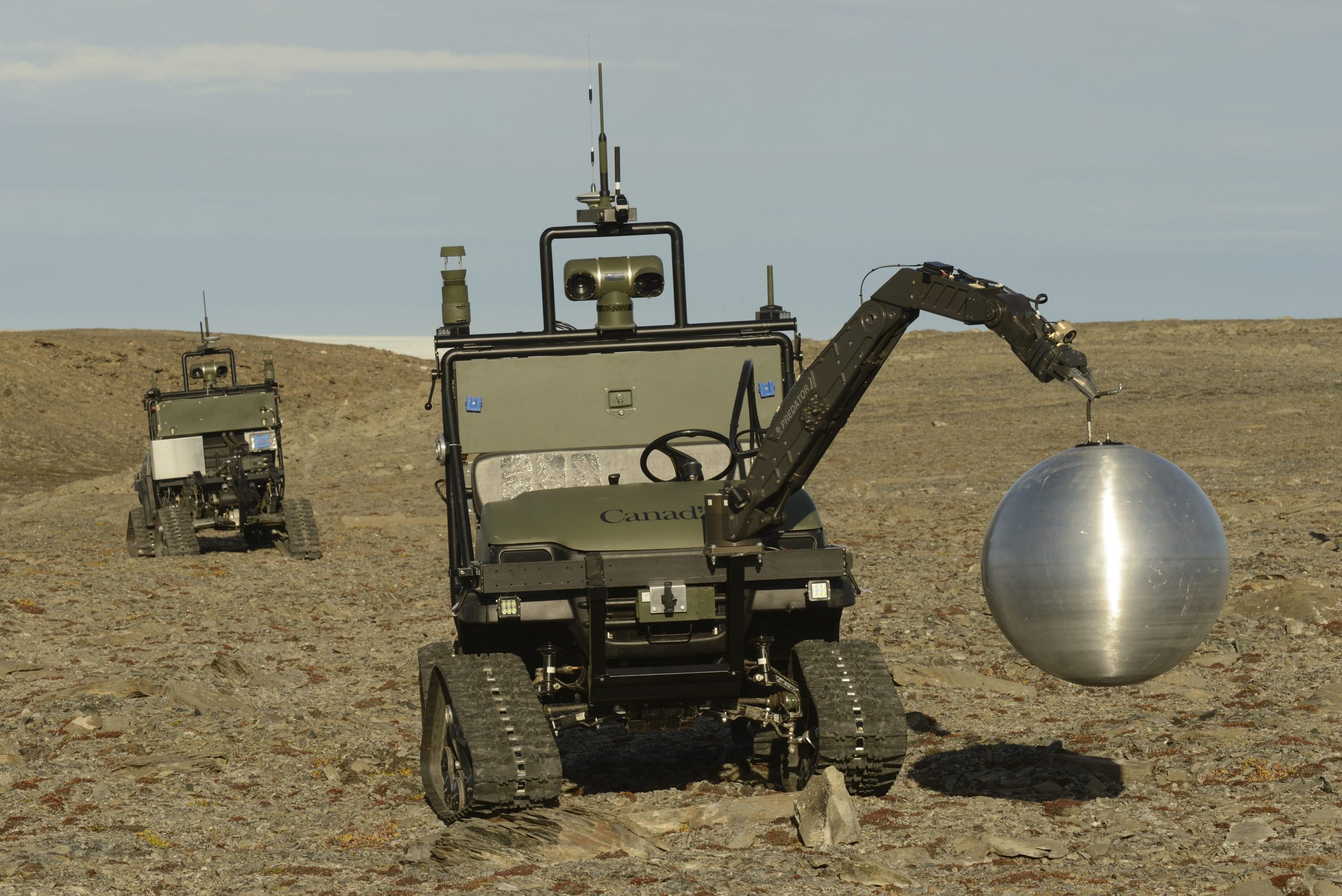Changing climate and political conditions could increase the traffic and potential illegal activity in the Canadian Arctic. The government of Canada understands the strategic importance of the area and has identified it as an area of focus for domestic operations in its Canada First Defence Strategy. The unique challenges of the Arctic environment – scarce resources, lack of infrastructure, and vast wilderness – demand unique solutions, strategically, operationally, and technologically.
To address these technological concerns, scientists from Defence Research and Development Canada (DRDC) executed the Canadian Armed Forces Joint Arctic Experiment 2014 (CAFJAE14), a biennial experiment sponsored by Joint Operations Command that also involved other government departments such as the RCMP and Environment Canada.
CAFJAE14 examined the potential role that unmanned ground, air and maritime systems could play in future Arctic operations.
As part of a series of joint capability development experiments, CAFJAE14 deployed 14 civilian, scientific and military personnel to Canadian Forces Station Alert last August. Situated only 817km from the geographic North Pole, CFS Alert is the most northern permanently inhabited area on Earth and provided an ideal location for experimentation given its remote location, harsh terrain, and limited resources. Two experimental unmanned ground vehicles (UGVs) and two experimental unmanned aerial vehicles (UAVs) were delivered from CFB Trenton to CFS Alert to support the experimentation.
A study in contrasts, the UGVs are converted all-terrain vehicles that can haul 500kgs at 10km/h for five hours over rough terrain while the UAVs, named APHID, are converted ultralight helicopters that can carry up to 70kgs at 100km/h for over an hour. These DRDC-developed prototypes – research platforms for future systems – demonstrated capabilities that might one day be deployed on future in-service unmanned or autonomous systems.
CAFJAE14 testing focused on the challenges of unmanned operations in the Arctic and examined scenarios such as search and rescue, chemical and radiological hazard response, logistics resupply, and autonomous mapping in advance of a larger scaled manned response. Using GPS, radiation, wind, and temperature sensors, as well as cameras, and a powerful manipulator arm, the UGV performed complex manoeuvres over punishing arctic terrain guided by three DRDC operators from Suffield Research Centre.
Designed for chemical, biological, radiological and nuclear defence work, the UGVs naturally excelled at radiation and contamination surveys, but also demonstrated new capability such as autonomous route following, cargo delivery and debris removal. Operators could teach the vehicle complex routes while driving and have the vehicle come home autonomously, using only machine vision. This technology could one day enable autonomous operations in instances where GPS is unavailable or being actively jammed, a limitation of current systems. The manipulator arm and new robotic lift deck allowed operators to remove large volumes of debris and, significantly, assist in personnel evacuation.
As with the ground vehicles, three other DRDC personnel remotely controlled an APHID helicopter equipped with GPS, cameras, and a cargo drop mechanism to fly over the arctic terrain. DRDC and Meggitt Training Systems Canada originally designed the APHID helicopter for light cargo delivery. In Alert, DRDC also used APHID to demonstrate low altitude, high-resolution image and radiation survey capability over land, sea, and ice.
Though highly capable alone, combined unmanned ground and air experiments revealed greater joint capabilities. When equipped with a radiation sensor, the APHID helicopter could perform dangerous low altitude surveys over radiation sources to speed the UGVs’ search and site remediation. With high speed over any terrain, the UAV provided fresh map data useful for UGV and ship navigation. However, when high arctic winds and ice fog prevented APHID flights, the UGV carried on doggedly unperturbed by weather. Finally when machines couldn’t do the job alone, people were ready to step in.
These initial experiments demonstrated that unmanned systems could play a useful role supporting manned operations in harsh environments such as the Arctic, extending the operational range, improving situational awareness and delivering vital supplies over vast hostile Arctic terrain.
While CAFJAE focused on unmanned systems for the Arctic environment, it is expected that experimental results will help inform the CAF when considering the role of unmanned systems in other harsh operational environments.
Jack Collier is a defence scientist with the Autonomous Intelligent Systems Section and Dr. Simon Monckton is lead scientist CAFJAE 2014 with Defence Research and Development Canada.

